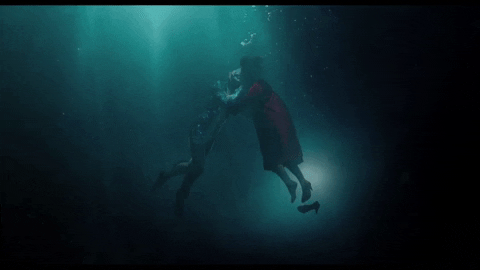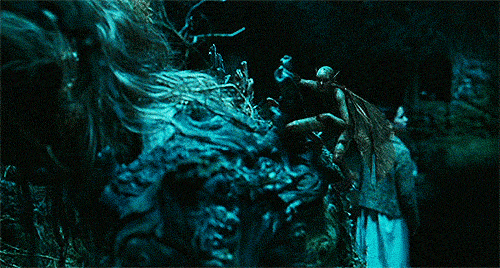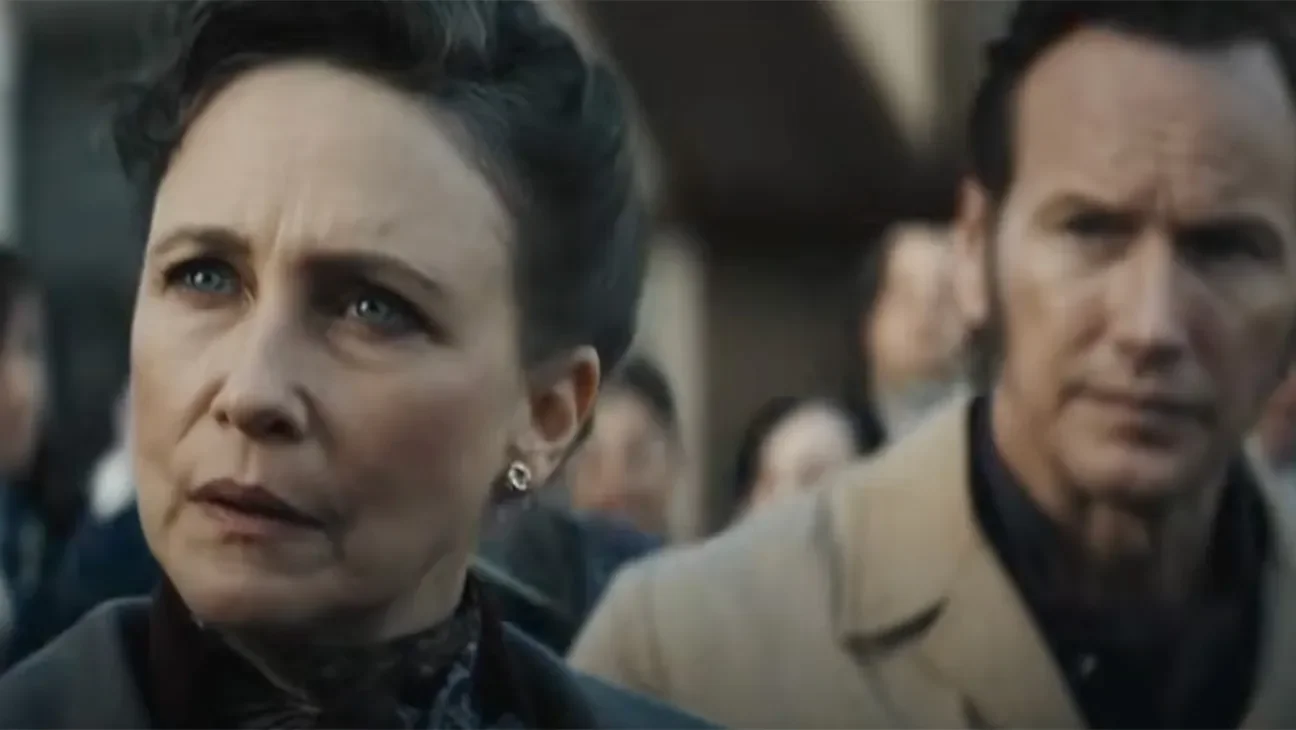The Dark Fantasies of Guillermo Del Toro
My goal for this section of the website is not just to geek out about the horror films I love but also to dive into what makes the genre great, especially when it comes to the stylistic choices of directors. A great director to start with is Guillermo Del Toro, whose films often intersect horror and fantasy.
Del Toro's movies are immersive pictures that often blend the macabre with the beautiful. He also has some of the most distinct monsters and creatures in horror, from the Pale Man to a hauntingly creepy version of the Tooth Fairy.
Before we dive into some of my favorite works, it is worth exploring his background, which directly affects del Toro's style.
Guillermo Del Toro's Childhood in Guadalajara
Guillermo del Toro, born in 1964, spent his childhood in Guadalajara, Mexico, which significantly influenced his unique worldview. Del Toro was surrounded by tales and folklore from Guadalajara, where ghost stories and dark legends were a part of the unique culture. As a Hispanic woman who grew up with stories of el chupacabra and la Llorona, I know how much the strange and unusual is a strong part of Latin American culture. As I'm sure anyone who has celebrated Día Del Los Muertos can attest to.
There are many ghost stories unique to Guadalajara, such as La Plancada, the ghost woman who appears in her white nurse's uniform to haunt the old Civil Hospital or El Diente, "the tooth," a rock formation that was once a human tooth plucked from the mouth of a giant who was said to roam the land long ago.
Looking at these stories and del Toro's love of classic horror, such as the Universal Classic Monsters, it is easy to understand how Guillermo del Toro's formative years helped shape his passion for the darker side of storytelling.
In fact, take a look at his house:
You can see that he has surrounded himself with a love of horror and monsters in particular, as these tales and legends surrounded him in childhood. Growing up, monsters, horror, and the shadowy dark in the world are just a facet of life for him and others who share a similar view.
Guillermo Del Toro's Inspirations
From the previous picture, you can tell that it would be easy to say del Toro was inspired by all things horror, but I think it's worth it to dissect some of the more specific inspirations. In an interview with A.Frame, del Toro listed the 5 Movies that shaped his filmmaking.
Among these are:
Pinocchio (1940)
Frankenstein (1931)
Jason and the Argonauts (1963)
Los olvidados (1950) “The Forgotten Ones”
Taxi driver (1976)
City Lights (1931)
The article is an excellent read on why del Toro chose these films, even though it doesn't explain why six and not five movies were selected lol. That aside, what I find most fascinating is that a common thread across all these films is the idea of being an outsider thrust into an unfamiliar world. Much of the narrative is about having to survive in that world and being changed by it, whether good or bad.
Out of these, Pinocchio and Frankenstein seem to have resonated with him the most, as he saw them very closely together as a kid. Through their responsive lenses, he saw them as a reflection of his own feelings of isolation as a child.
I also find his choice in City Lights to be equally interesting because through this movie, he saw how storytelling can be elevated with the duality of emotion – laughter and sadness. One cannot exist without the other, and I think that is why comedy writers, such as Jordan Peele, make an easy transition from comedy to horror writing.
By understanding this inspiration, it is easy to see why del Toro's own work seamlessly blends beauty with horror, allowing for moments of tenderness even in the darkest narratives.
The Most Iconic Films of Guillermo Del Toro Film
I could probably fit another 1,000 words in this article to list out the many del Toro films that have stuck with me over the years, but I will leave it at my top three and why I love these films in particular:
Pan's Labyrinth (2006)
This is by far my favorite del Toro film, along with being one of my favorite horror films of all time. It is centered on a little girl named Ofelia and her experiences dealing with post-Civil War Spain. It also has a lot of insight into a troubled family dynamic, especially the inclusion of her stepfather, Captain Vidal, who becomes the main antagonist. The physically abusive father figure, Ofelia's desire to protect her family but being helpless to do so, and her desire to escape into a fantastical realm spoke to me personally, and I found a kindred essence in this film.
I also loved how Guillermo del Toro used a rich color palette of primarily cold blues and warm golds to underline the contrast between the harsh waking world and the dark fantasy, which can sometimes be equally harsh. The film's cinematographer, Guillermo Navarro, also uses sweeping, fluid camera movements, which, to me, comes off like a ballet but helps to create a seamless blend between these two worlds.
Of course, the standout in this film is the immersive fantastical world and the beings that inhabit it. I found them alluring and horrifying, which I'm sure was del Toro's intention. I also think one of the reasons why this film has held up so wonderfully is because it uses a blend of practical and CGI.
Crimson Peak (2015)
I admitted I did not like Crimson Peak when it first came out, despite me being a Victorian culture stan. However, it was the second viewing where I fell in love. Perhaps I wasn't in the right head space at the time, but during my initial run, I found it predictable. My biggest issue was that the subplot between Lucille and Thomas Sharpe came off disingenuous and Lucille especially hit one-note. The about-face that Thomas does also felt contrived.
While I still feel like there are a few areas of weakness with the film, I now believe this film is a worthy watch, especially for fans of Gothic Horror. What is most striking to me is the color palette, which deviates from a simple contrast, like Pan's Labyrinth. In the film, each color holds a specific symbolic value for each ghost (red ghosts are trapped, black ghosts are tired to the environment, and white ghosts have found peace). Baroque happens to be one of my favorite art styles and I felt the film was inspired greatly by it. The atmosphere, heavy like the snow constantly outside, is really what makes the film shine.
The Shape of Water (2017)
There are certainly some differing opinions on this film, which I covered in my essay on disability in horror, so I will not go into where it falls short in representation of that, but regardless, The Shape of Water remains one of my favorite del Toro movies. The film tells the story of a mute woman's unexpected romance with a humanoid amphibian creature. It is a clear nod to The Creature from the Black Lagoon. Believe it or not, there is a subsection of horror dedicated to humanoid monster romance, but I think del Toro handles this inspiration in a tasteful and unique way.
Like the other films mentioned, The Shape of Water uses colors, primarily uses blues, greens, and the reflection of the water to submerge the reader directly into the storytelling. Cinematographer Dan Laustsen does a phenomenal job of highlighting the fluidity of water with the use of rain and other water elements. The storytelling and acting truly stand out in the film, and although there are obvious issues with representation, as mentioned, as someone who does feel like they are often on the outside, where no one "gets me," – I felt seen and still do each time I watch the film.
Diving into del Toro's Unique Cinematic Style
Del Toro's films are distinguished by their exquisite creature designs, meticulous world-building, and striking visual aesthetic. His cinematography frequently blurs the boundaries between reality and fantasy, offering films that are both dreamlike and unsettling yet alluring.
In my opinion, his cinematic style often combines the following elements:
Use of Color
I've mentioned the use of color throughout this blog post, and it's worth repeating: Guillermo del Toro purposely and masterfully uses color in his film, playing with saturation, balance, and hue to elicit emotional states from both the characters on screen and the audience. A blue or green tone, for example, can be used to portray magic or danger, while del Toro can use an obvious choice like red for anger or go for something unexpected like gold.
Alchemic Cinematography
Since Guillermo del Toro is such a colossal horror lover and horror elements can be found across many different genres – from science fiction to fantasy and even romance, it stands to reason that his films are always hybrids – from blending fantasy with reality with a touch of historical ugliness to merging the sinister with the romantic or monsters with humanity.
Fluid Camera Work
I will say again—in del Toro's world, the camera is like a dancer, and each movement and frame is purposeful. The fluidity and gracefulness of the camera, which revolve around meticulously designed sets, allow the audience to feel every emotion and be fully immersed in the worlds he creates.
Practical Effects
Guillermo's work does use CGI, but I am forever grateful that he seems to prefer practical effects. Not only do these special effects last the test of time, but because the puppets, animatronics, and other practical effects can be more articulated, they become more realistic. It allows del Toro to show these often grotesque or frightening creatures with humanity and sympathy, subverting monster tropes in the process.
Storytelling Centered on "The Other"
Guillermo's film often shows the "other," which allows the audience to relate to being misunderstood or ostracized or understand the feeling. His characters are the segway between societal norms and an environment that is far beyond normal, showcasing how it feels to be caught in the middle.
Blurring The Lines Between Horror and Fantasy
The ability of Del Toro to combine the fanciful and the brutality of reality is what gives his film a distinct look and feel. Within each scene of his body of work, you will find themes of childhood innocence, grief and loss, and the darkness that is ever present within human nature. For those who want to write horror, Guillermo del Toro is a fantastic director to study.
Yet, despite the horrifying true evil of human nature, his works also include moments of wonder, beautify, and of course, hope. He creates settings that are both magical and horrifying, and his characters—both human and non-human—have multiple layers that evoke empathy in the viewer.
As Guillermo del Toro's films tell us, monsters exist both outside and inside of us, and often, the most fantastical realms, whether good or bad, are the ones closest to home.

















Explore how Guillermo del Toro transforms Frankenstein into a symbolic, emotional fairytale that stands apart from Mary Shelley’s original.